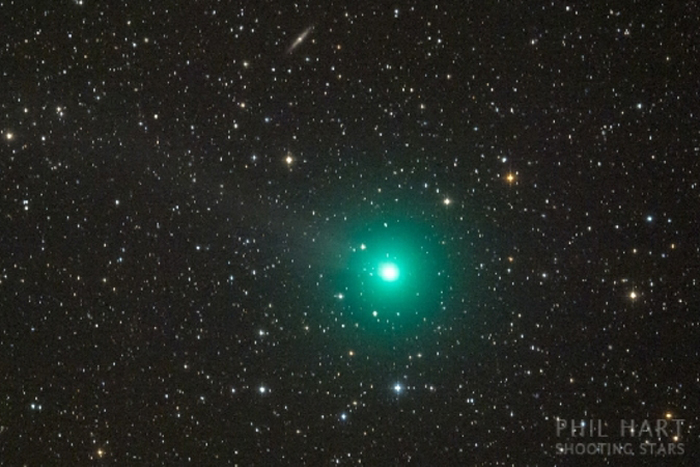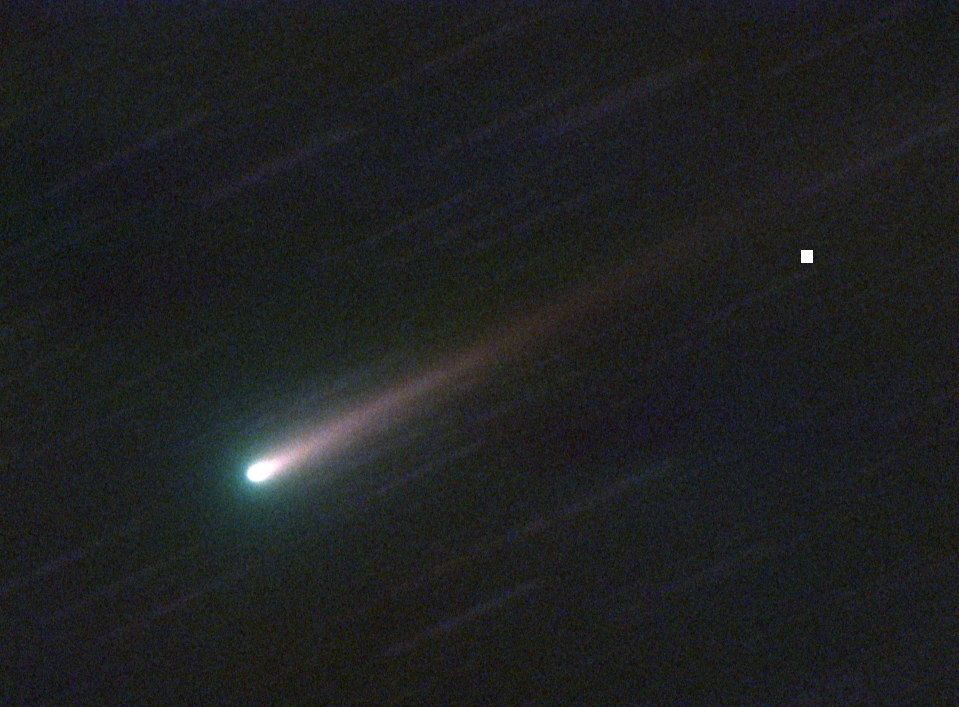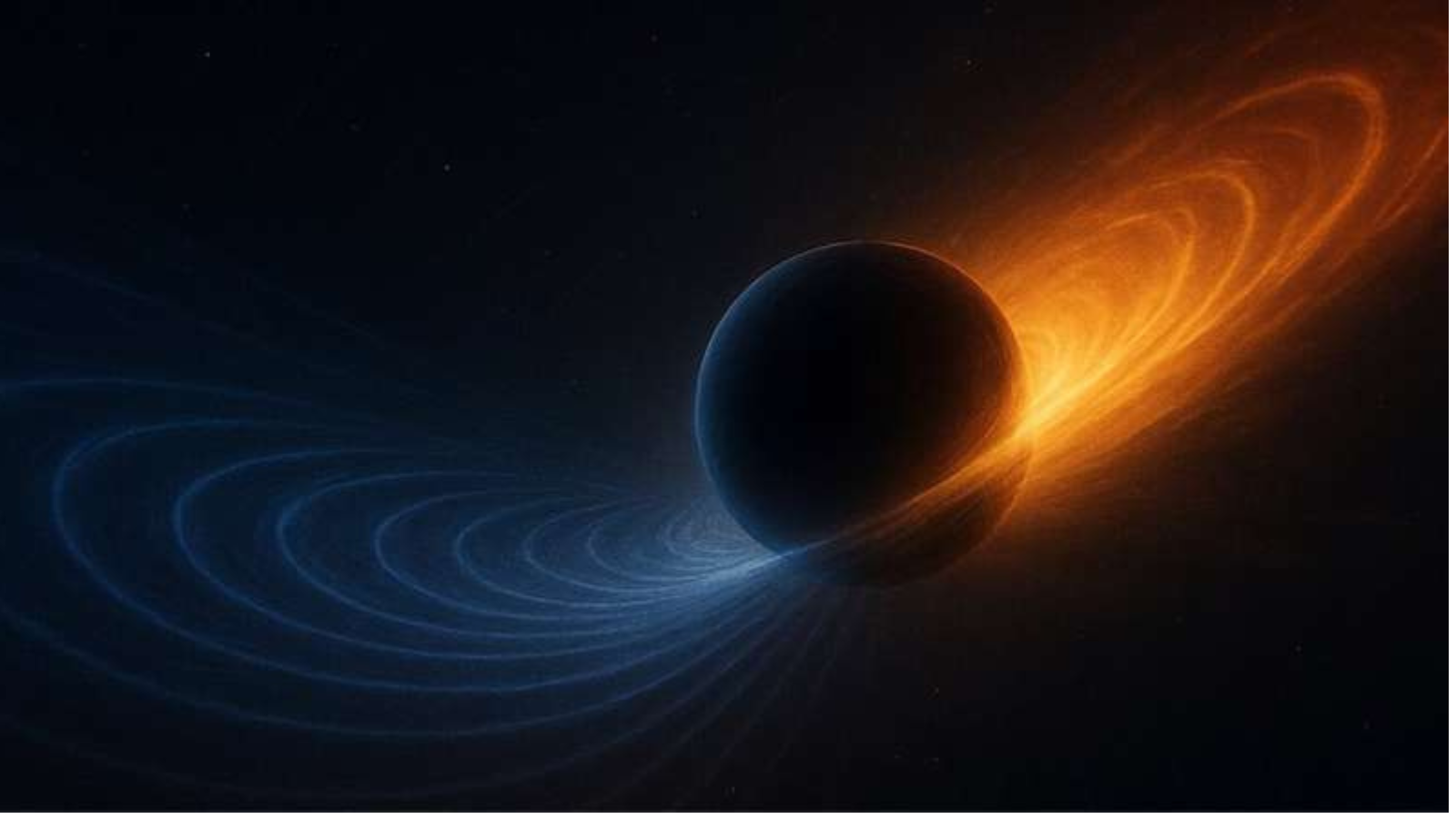
A newfound comet could put on a spectacular show in Earth's skies in early 2015.
The comet — officially catalogued as 2014 Q2, or Q2 for short — should be a fine object to view in small telescopes and binoculars during much of January. In dark skies free of significant light pollution, the comet may even be visible with the unaided eye.
Amateur astronomer Terry Lovejoy first discovered 2014 Q2 just before dawn on Aug. 17, 2014, from his roll-off roof observatory in Birkdale, Queensland, Australia. The newly discovered comet is the fifth one Lovejoy has found since 2007. He spotted it on CCD camera images he took using a Celestron C-8 telescope. [Take Space.com's Comet Quiz]

When Lovejoy first saw the comet, it appeared as a diffuse glow about 4,000 times dimmer than the faintest star visible to the unaided eye. At that point, the comet was located in the southern constellation of Puppis the Stern and was moving very slowly northwestward.
The comet is now performing far better than original forecasts had suggested. Soon after the comet's discovery, astronomers predicted that it would not get much brighter than magnitude 8.
Astronomers measure the brightness of a star in the sky using a magnitude scale. On this scale, the brightest objects have the smallest numbers, and the faintest objects have the largest numbers. It’s a "backward" scale that astronomers inherited from the ancient Greek astronomer Hipparchus. The brightest stars are magnitude 0 and 1. The faintest stars visible without optical aid are magnitude 6.
Brighter prospects
Breaking space news, the latest updates on rocket launches, skywatching events and more!
In November, the comet brightened at an unexpectedly rapid pace, shining at magnitude 9.2 on Nov. 18, magnitude 8.4 on Nov. 22 and 7.9 on Nov. 29.
As of Dec. 26, Lovejoy was shining at magnitude 5.3. Observers using binoculars and small telescopes have described it as a circular patch of white light, nearly 15 arc minutes in diameter (roughly half the apparent width of the moon), brighter near the center and fading off around the edges.
The size of the comet's coma (the atmosphere surrounding the cosmic body's nucleus) currently measures about 229,000 miles (369,000 kilometers).
No tail has been reported, although long-coexposure photographs have indicated a wispy, narrow appendage extending outward from the comet as well as a strong greenish hue within the coma due to the presence of cyanogen, a poisonous gas, as well as diatomic carbon. Both of these substances glow green when illuminated by sunlight. This is called "resonant fluorescence."
Closest to Earth on Jan. 7
Gareth V. Williams, of the Smithsonian Astrophysical Observatory, calculated the comet's revised orbit based on 530 observed positions from July 1 (before the comet was discovered) through Dec. 4. He found that the comet will pass through the perihelion point of its orbit (its closest point to the sun) on Jan. 30, when it passes 119.9 million miles (193 million km) from the sun. However, the comet is expected to reach its closest point to Earth — a minimum of 43.6 million miles (70.2 million km) — on Jan. 7.
For this reason, assuming that the comet will continue to brighten at its current rate, I would suggest that Lovejoy will be at its brightest around Jan. 7, shining as bright as magnitude 4.6, thus making it one of the brightest comets located high in a dark sky since the unexpected outburst of Comet Holmes in October 2007. [101 Amazing Skywatcher Photos from 2014]
That's a bit brighter than Eta Ursae Minoris, the faintest of the four stars in the bowl of the Little Dipper. So, will you be able to glimpse the comet without any optical aid? The answer is simple: If you can see all four stars in the Little Dipper's bowl, you should be able to see the comet.
Better placed for Northerners
Comet Lovejoy is moving along a south-to-north path, nearly perpendicular to the celestial equator, meaning that it will become increasingly better placed for Northern observers with each passing night during the coming weeks.
Currently, a bright waxing moon will interfere with the ability to see Comet Lovejoy. The moon will turn full on Jan. 4, and it will light up the sky through the entire night. But on Jan. 7, the moon will rise about an hour after the end of astronomical twilight, meaning that there will be about an hour of dark sky to view the comet. And each night thereafter, moonrise comes about an hour later than the previous night, meaning progressively longer intervals of darkness while the comet climbs higher and toward a better observing position for early-evening viewing.
Since it was found last summer, the comet had remained exclusively within the boundaries of the constellation Puppis. But it has been slowly picking up speed as it's approached both the sun and the Earth, and on Dec. 17, it finally crossed over from Puppis into the adjacent constellation of Columba the Dove.
On Dec. 27, the comet moved into Lepus the Hare, and when the new year begins, that is where Lovejoy will reside. In January, the comet will move rapidly to the northwest from Lepus, into Eridanus the River by Jan. 3, and into Taurus the Bull by Jan. 9.
During this time, Comet Lovejoy will be racing at about 3 degrees per day, so even a few minutes of watching with a telescope should reveal its shift relative to background field stars.
The comet will then begin to slow in its course across the sky, reaching Aries the Ram by Jan. 17 and finally skirting the boundary of Perseus the Hero and Triangulum the Triangle during the final week of January. [See Images of Constellations of the Night Sky]
The darker your sky, the better the view
Comet expert John Bortle noted that the impressiveness of the comet will vary according to how much light pollution there is in the observer's area.
"Near perigee [the point closest to Earth], I would anticipate that the coma will subtend a full degree in its diameter [twice the apparent width of the moon], perhaps even somewhat more," Bortle said. "However, much of that is likely to be of a rather low surface brightness that will be impacted by any light pollution. Urbanites may well find only the comet's central condensation to be obvious to them even using optical aid, giving the comet much less of an impressive appearance when compared with that seen by those viewing from dark rural locations."
Bortle also said that the comet is probably a bit too far from the sun for there to be much of a visual dust tail, but those who photograph it should continue to image a long and impressive gaseous appendage. But "overall, it should be interesting," he added.
After Jan. 7, as Lovejoy pulls away from Earth, the comet will fade — but it will do so slowly, because it will still be approaching the sun. By Jan. 30, it should be at around magnitude 5.4, but the waxing moon will again be an increasing hindrance. In February, as Comet Lovejoy moves away from both the sun and Earth, it should fade rapidly. So for most observers, January will be the month to see it.
Next opportunity in about 8,000 years
Comet Lovejoy is traveling in a highly elongated orbit around the sun, and based on its current orbit, we can say with some degree of certainty that it has been here before, about 11,500 years ago.
As the comet sweeps through the inner solar system during the coming weeks, some of its orbital energy will be sapped, which will slightly reduce its orbital period. Its next scheduled appearance through our solar neighborhood is due around the year 10,000.
Joe Rao serves as an instructor and guest lecturer at New York's Hayden Planetarium. He writes about astronomy for Natural History magazine, the Farmer's Almanac and other publications, and he is also an on-camera meteorologist for News 12 Westchester, New York. Follow us @Spacedotcom, Facebook and Google+. Original article on Space.com.
Join our Space Forums to keep talking space on the latest missions, night sky and more! And if you have a news tip, correction or comment, let us know at: community@space.com.

Joe Rao is Space.com's skywatching columnist, as well as a veteran meteorologist and eclipse chaser who also serves as an instructor and guest lecturer at New York's Hayden Planetarium. He writes about astronomy for Natural History magazine, Sky & Telescope and other publications. Joe is an 8-time Emmy-nominated meteorologist who served the Putnam Valley region of New York for over 21 years. You can find him on Twitter and YouTube tracking lunar and solar eclipses, meteor showers and more. To find out Joe's latest project, visit him on Twitter.
